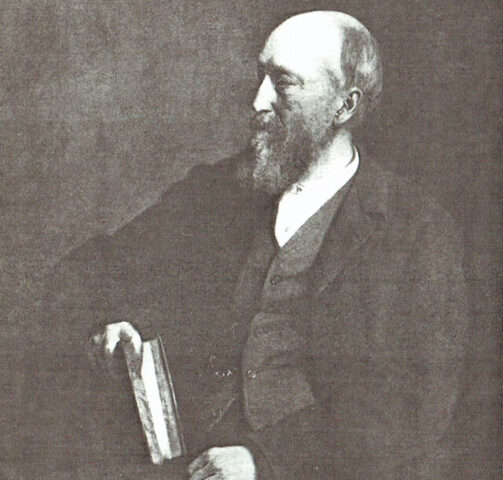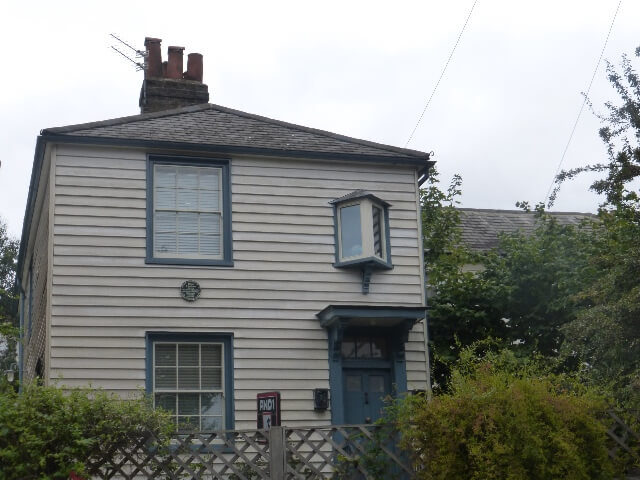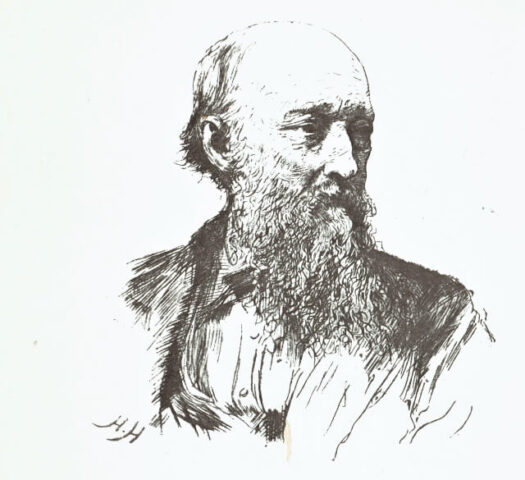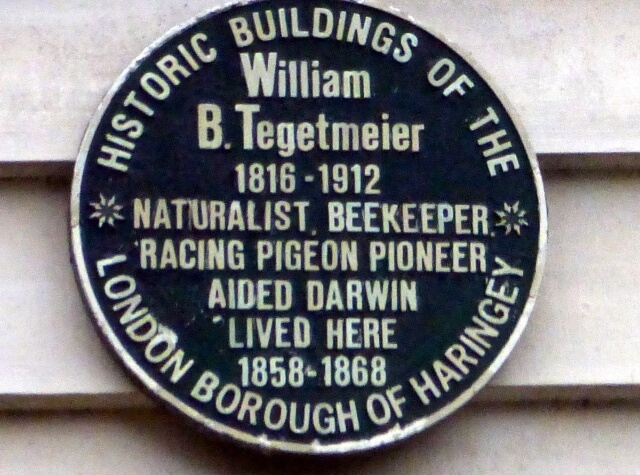This is the first article in a new series for 2022 – Hornsey Personalities of the Past
The 19th century naturalist who immediately comes to mind is Charles Darwin whose seminal work, The Origin of Species, (1859) rocked the sedate world and beliefs of the Victorian Establishment. It is, therefore, surprising to learn that Darwin rated W B Tegetmeier an authority on several species of birds and on bees and corresponded with him for years. Indeed, Tegetmeier’s house in St James’s Lane, Muswell Hill, came to be known as ‘The Bee House’ as a result of his extensive work studying and breeding them.
A lifetime interest in Nature begins

William Bernhardt Tegetmeier (1816 – 1912) was born in the Buckinghamshire countryside at Colnbrook. He was the son of a naturalised Hanoverian who became a Royal Navy surgeon. As a young boy William loved roaming through the fields around their home and this started a life-long interest in Nature. When he was aged 12, the family moved to London which made him deeply unhappy. As luck would have it, the house in which they lived was owned by William Yarrell, a well-known zoologist and naturalist, who encouraged young William in his interests.
His father decided that William should be a doctor and at 17 he started attending medical lectures at University College. Also, he obtained a ticket for the British Museum Reading Room which he held for 72 years. He studied medicine for ten years, winning a gold medal for botany and gaining second prize in the open examination set by the Apothecaries Company, the first prize won by his famous contemporary Edward Jenner. However Tegetmeier never qualified becoming an assistant to a Northampton doctor where his main interest was gardening, keeping homing pigeons and poultry. William showed great care for animals and plants but he was brusque and dogmatic with people and when his father died in 1841 and left him some money, he abandoned medicine.
Establishing himself in London
Tegetmeier’s knowledge of anatomy and physiology, gained as a medical student, came in very useful as a practical breeder and writer on poultry, pigeons and general natural history subjects. Homing pigeons were his first great interest; he was a recognised authority in every aspect of pigeon racing and on more than one occasion advised the Government of the day on the establishment of pigeon posts, ie. the use of these birds with their natural homing abilities to carry messages. Tegetmeier supplied the birds. His didactic style of lecturing led to employment at the Home and Colonial Society teacher training college in Gray’s Inn Road. There he met Miss Anne Edwards Stone, the Mistress of the Infants Model School, and they married in December 1845. They had four daughters and a son, Egbert.
Tegetmeier’s association with Charles Darwin
In 1855 William Yarrell introduced Tegetmeier to Charles Darwin, whom he supplied with many skulls and skeletons and for whom he carried out many experiments in breeding. Darwin generously acknowledged this help and corresponded with Tegetmeier until 1881. Unfortunately the 160 letters Tegetmeier received from Darwin were sold by the family to an American collector. Tegetmeier’s experiments with bees, carried out whilst living in St James’s Lane, were described in Darwin’s The Origin of Species which mentions few then-living zoologists. In the mid-1870s Darwin gave important lectures entitled, ‘Homing Pigeons’ and ‘Variations in Domestic Animals’, acknowledging his indebtedness to Tegetmeier.
Married Life in Muswell Hill
Initially, the Tegetmeiers lived in two rooms near Drury Lane, then they moved to Islington, Tottenham, on to Willesden, then Wood Green, settling in Muswell Hill in 1858 in an 18th century weather-boarded and half-timbered house, now Nos.101 & 103, still standing as two houses in St. James’s Lane, near the junction with Muswell Hill. They moved to another house in the same road which was subsequently demolished when the railway viaduct was built to accommodate the branch line from Finsbury Park to Alexandra Palace, opened in 1873. From there they went to Coldfall Lodge in Fortis Green and later to North Finchley.

Public recognition
Tegetmeier’s reputation as a breeder of birds led to him being chosen as judge at big livestock shows and secured his appointment as poultry editor of The Field, a position he held for over 40 years, retiring in 1907. For many years he supplied leading articles on Nature for The Queen. He was one of the original members, and joint first Secretary, of the Savage Club, founded in 1857 for professional men in Art, Drama, Law, Music or Science and sustained it financially for many years. He became a Fellow of the Zoological Society in 1905; his membership of the British Ornithologists’ Union dated from 1873 and he was a frequent exhibitor at its meetings.

He wrote 32 books on a variety of birds such as pigeons and pheasants, including an 1854 standard work on poultry; he took a great interest in pigeon racing and in the use of mules for agricultural, draught and military purposes. Tegetmeier firmly believed in human beings’ responsibility for animals and he disapproved of the factory farms which were being trialled. He felt the only hope for specialisation in birds and animals lay in free range methods; ‘the longer the runs, the more healthy will be the condition of the fowls’.

Into obscurity
W B Tegetmeier died in 1912 at the grand old age of 96, his wife and two daughters having pre-deceased him. The last three years of his life were spent with his son in Cricklewood. In 1899 he had bought a family plot in Marylebone Cemetery and there he was laid. Hornsey Historical Society campaigned vigorously for a memorial plaque to be fixed to the house in St James’s Lane where he lived. One was erected under the Historic Building of the London Borough of Haringey scheme in 2008 but alas, the plaque is no longer on the house’s front wall and the house is obscured by trees in summer.